architecture
Latest

Montreal's iconic brutalist building has finally been finished inside Unreal Engine
Architects have finally completed Montreal's legendary Habitat 67 inside Unreal Engine.
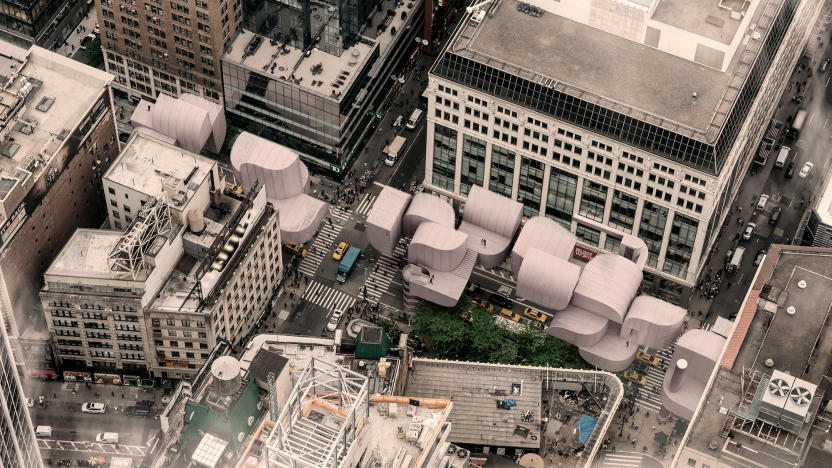
Designing for a better future: Framlab’s vision for urban architecture
When it comes to sustainability, cities represent both the problem and the solution. Framlab is a research and design studio based in Bergen, Norway, and Brooklyn, New York, and architects there are focused on rethinking the way we build city spaces.

3D-printed 'living ink' could lead to self-repairing buildings
Scientists have developed a 'living ink' that could be used to print organic materials, possibly including buildings that repair themselves.
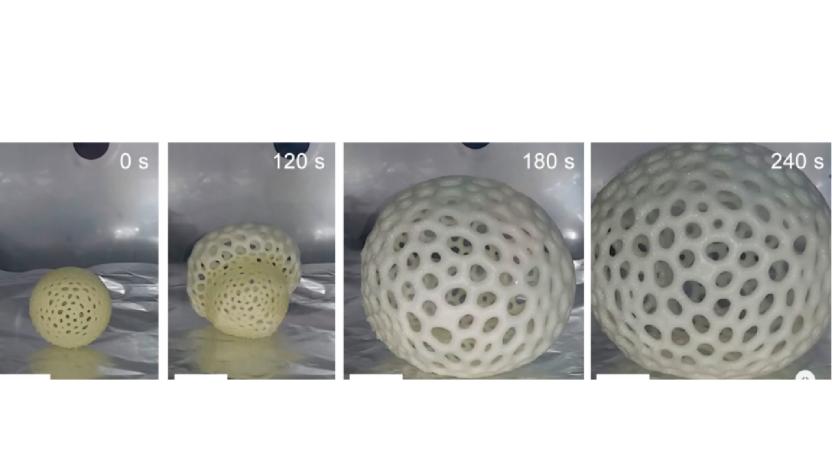
This 3D-printed foam expands up to 40 times its original size
A team from UC San Diego developed a foaming resin that can expand to up to 40 times its original volume.
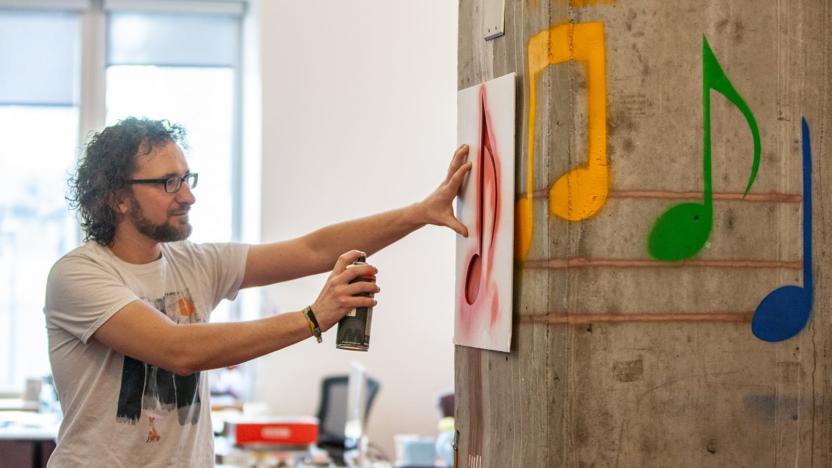
MIT project turns spray paint into a functional user interface
Scientists from MIT have developed a way to create interactive surfaces using airbrushed inks -- or in other words, graffiti that actually does stuff. The SprayableTech system lets users create room-sized interactive graphics with sensors and displays that can be applied to everything from walls to furniture. Spray-painted art on walls can be used to turn lights on and off, for example, while designs airbrushed onto the arm of a couch can be used to control a TV. After designing the interactive artwork with a 3D editor, the system generates stencils for airbrushing the layout onto a surface. Then a series of inks are applied -- conductive copper ink, paint, dielectric, phosphor, copper bus and a clear conductor -- and then a microcontroller is attached, connecting the interface to a board that runs the code for sensing and output. The system hinges largely on the stencil design phase, to ensure the inks are placed in the right places and can connect to the microcontroller properly, so at this stage there's not much opportunity for spontaneous exploration -- you couldn't just spray a design on the wall and expect it to control your lights, for example. But the team is now working on creating modular stencils, potentially allowing users to try the system at home without needing to use a 3D editor or cut out stencils themselves. And looking ahead, the team has even bigger plans. Michael Wessely, lead author on the paper about SprayableTech, says, "We view this as a tool that will allow humans to interact with and use their environment in newfound ways. In the future, we aim to collaborate with graffiti artists and architects to explore the future potential for large-scale user interfaces in enabling the internet of things for smart cities and interactive homes."
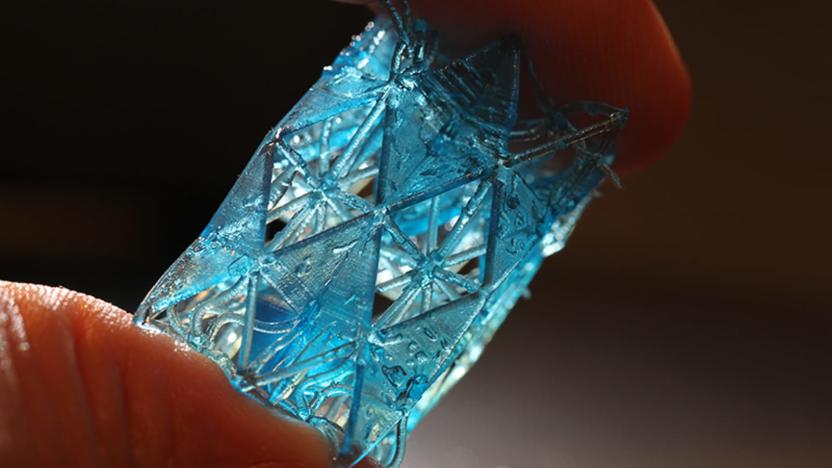
Researchers create bone-inspired 3D-printed building materials
You may not think of your bones as buildings, but researchers do. A team from Cornell University, Purdue University and Case Western Reserve University believes that by studying the internal structure of bones, they may be able to 3D-print stronger construction materials for homes and buildings.

Logitech's new stylus is built for VR
Architects, product designers and concept artists just got a ground-breaking new tool in their creative arsenals: Logitech's VR Ink Pilot Edition, the world's first VR stylus that draws on both two-dimensional surfaces and in the air in three-dimensional room-scale spaces. Unlike previous iterations of similar technology -- usually unwieldy controllers -- this stylus puts all the power in the designer's fingertips for complete precision and accuracy.
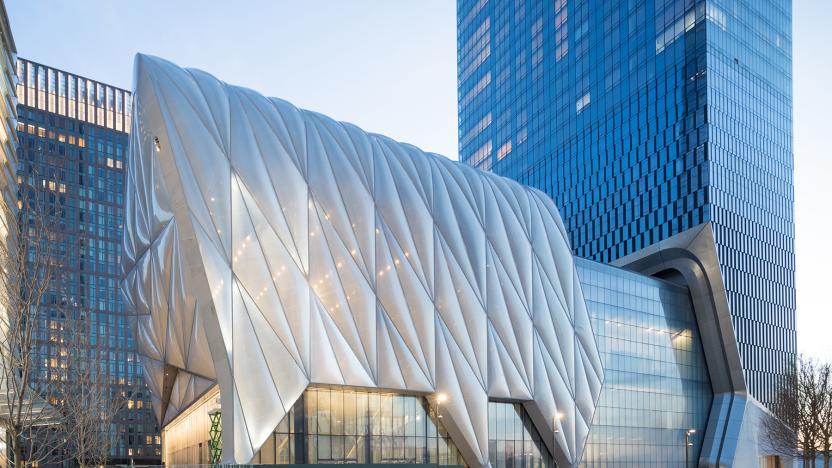
The Shed and the art of the flex
The Shed's concept is simple: It's the 120-foot tall building that moves. This idea is both its architectural hallmark and its metaphor for the future of culture. Opening on Friday, New York City's half-billion dollar, hybrid museum-meets-performance space can shapeshift to double its indoor perimeter in five minutes.

ARM says its next processors will outperform Intel laptop chips
ARM-based laptops have been pretty pokey to date, but you might have a different impression of them in a year or two. The company has offered a rare peek at the performance expectations for its future processor architectures, and the figures might make Intel nervous. While ARM already believes that its recently unveiled Cortex-A76 is competitive with Intel's 2.6GHz Core i5-7300U, it expects its 2019 "Deimos" and 2020 "Hercules" designs to clearly outperform that CPU. You would get "laptop-class" speed from a more efficient mobile chip, according to the company.

'Astrocyte' explores how architecture can interact with humans
Philip Beesley's Astrocyte aims to show that architecture can be more than just ornamental. Built from acrylic, mylar, sensors, custom glasswork, 3D-printed lights and using AI, chemistry and a responsive soundscape, it not only invokes emotional reactions but reacts to participants' movements and gestures. The giant, delicate-looking structure (inspired by astrocyte nerve cells), also prompts unusually respectful interactions from human observers.
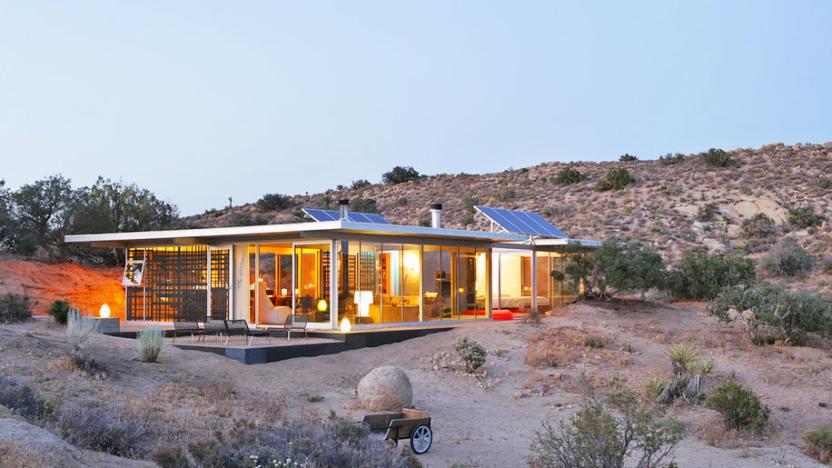
Plans Matter offers Airbnb-like listings for architecture nerds
Google is working on adding vacation rentals to its hotel search results and Airbnb is going to help you find national park-adjacent rentals, mansions and penthouses. But if those options are quite special enough for you, a website called Plans Matter might be up your alley. Started by architects Lindor and Scott Mueller, Plans Matter only lists modern houses designed by respected architects. Writing on the website, the couple says, "When we plan our travel, we search for places to stay that are well designed and authentic. Places that will elevate our experience beyond keeping us warm and dry. Places that have architectural intention and a story to tell. Our goal is to make these places easily available for people to experience on their own."
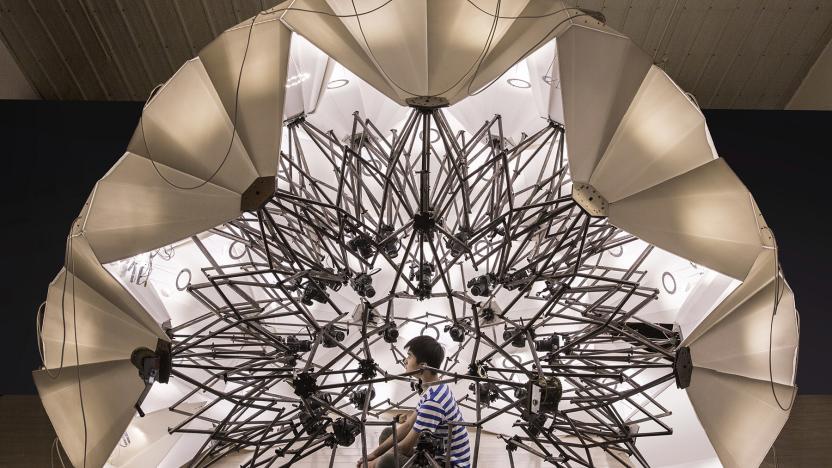
Digitize yourself with the 3D Copypod
Copying yourself digitally is not easy. Ideally, you want multiple photos taken from every angle at the same moment with all-around, soft illumination. A company called People's Industrial Design Office in Beijing, China has created something called the 3D Copypod that can do all that for you in one neat package. It's based on the "Hoberman sphere," a type of geodesic dome that can fold down to a much smaller size thanks to its scissor-like joints.
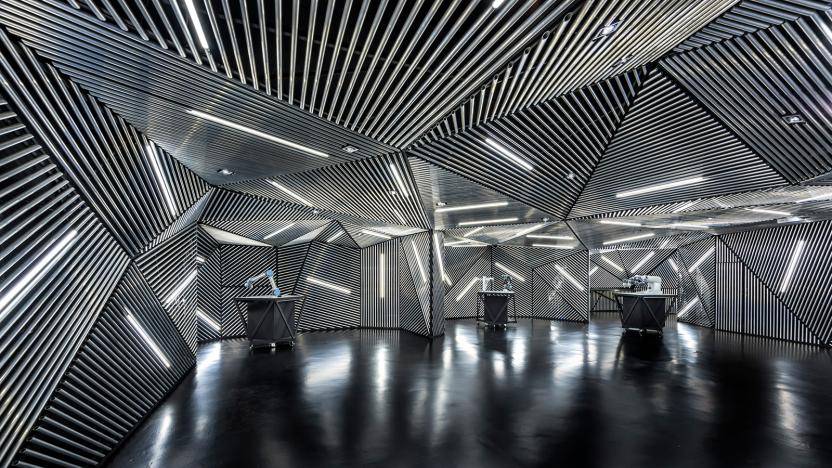
Decor as dystopia at a Singapore robotics training center
What you're looking at is not an art installation or set from the next Tron movie. It's the new RACE Robotics Lab in Singapore, used to display the latest industrial robots and train engineers working on automated assembly lines. According to architect Ministry of Design, the aim was to create "an engaging and future-forward spatial experience that denotes the idea of industrial automation and precision."

Microsoft and Steelcase envision the perfect Surface office
With the Surface Book, Surface Studio and other products, Microsoft has managed to attract graphics pros, designers and engineers, many used to working with Apple products. It's now taking the next logical step by expanding into workspace lifestyle concepts via a partnership with Steelcase. The two companies have unveiled "Creative Spaces," which are office furniture layout concepts optimized to work with Surface products.

Hummingbird-inspired wind turbines, and more in the week that was
It's official: New York just gave the green light to build the largest offshore wind farm in US history. The project will be located 30 miles southeast of Montauk, and it will produce enough energy to power 50,000 homes. Meanwhile, researchers have developed a revolutionary new wind turbine that trades spinning blades for flapping wings reminiscent of a hummingbird. Dubai kicked off phase three of the world's largest solar park. When it's complete it will produce a whopping 800 megawatts of clean energy. Speaking of the sort, Elon Musk is a champion of clean energy -- so imagine our surprise when Musk threw his support behind former ExxonMobil CEO Rex Tillerson as Secretary of State. And Ireland just voted to become the world's first country to fully divest from fossil fuels.

HoloLens is helping engineers visualize building blueprints
With its ability to give the real world a digital assist, mixed reality can be much more useful than the insular cocoon of VR. Microsoft is showing again how HoloLens can help designers via a collaboration with the University of Cambridge's construction IT lab. "We've never been able to bring 3D models from buildings and bridges off our screens and onto the real structure," says Cambridge's Ionnis Brilakis. Using the HoloLens, however, engineers can overlay a design onto a real world bridge or building (or vice-versa), making inspections simpler and safer.
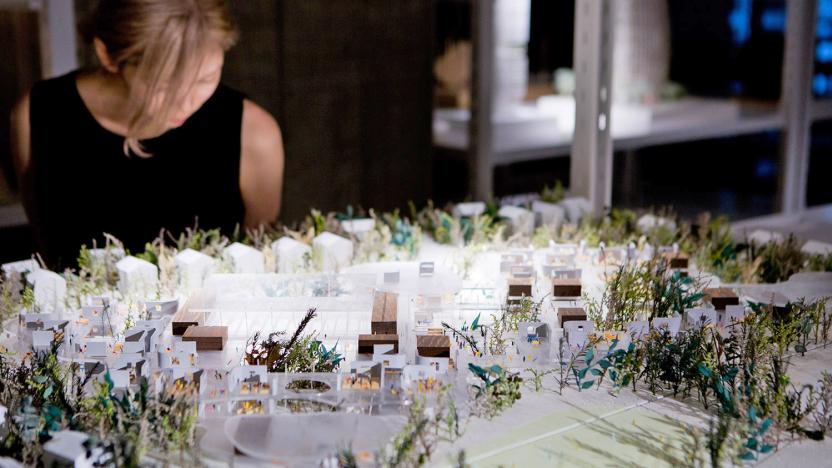
A city in a warehouse in a city
I've always had a fascination with architectural models. This interest rose in recent months, following a move to a new apartment block. I love my new place, but it has its problems. There are over-sized windows that capture too much heat, coupled with poor ventilation. There's the glass panel on the balcony, which rattles whenever the wind picks up. And the surrounding area isn't beautifully landscaped, but instead a patchwork of concrete and the detritus left behind from years of construction. In the lobby of the block, there's a scale model of my building, complete with tiny figures lounging on balconies, landscaped surroundings with vibrant plants and children playing on the terrace. Whenever I look at that model, everything is perfect. It's an idealized version of the real thing; the architect's dream for what this place could've been, rather than the considerably more drab reality. And in Tokyo, there's a museum that houses those dreams: The Archi-Depot. Opened a few months ago, it's a giant room built to contain tiny structures. Shelf after shelf is filled with models, many of which are of real-world Tokyo buildings, including the tallest structure in Japan, Skytree, Haneda Airport and others. Each is accompanied by a QR code that takes you to an information page on the building, where you'll find blueprints, information on architects, and links to other works.

Six amazing underwater buildings
By Cat DiStasio While architecture on land strives ever higher, designers in wetter parts of the world are finding new ways to build beneath the waves. Underwater buildings aren't exactly common -- partly thanks to their enormous expense -- but there are a few stellar examples of submerged structures that demonstrate how a trend like this could really take off. From the world's largest underwater restaurant in the Maldives to a community of luxury floating condos in Dubai that put beachfront property to shame, undersea buildings illustrate what can be done when we fuse technology with architecture.

Space architecture: Six buildings for the final frontier
By Cat DiStasio Mars has captured the world's attention recently, but space agencies around the globe haven't forgotten that there's a whole slew of other planets out there. And with continued planetary exploration, of course, comes the necessity to set up bases that can support life, research and agriculture far, far away from home. Science and farming intersect in outer space, and the results are like nothing here on Earth. Many buildings designed for space rely on creative approaches like 3D printing, solar power, native materials and portability. We've included six structures in our gallery below, and each is more unique than the one that comes before it.

6 buildings that you can sled, ski and snowboard on
By Cat DiStasio Snow sports are wildly popular around the globe -- even in regions with no winter to speak of. No matter, because architects and engineers have joined forces to create ski and snowboard slopes in some of the most unlikely places. Whether indoors or out, artificial snow or pure natural pow-pow, these buildings with built-in slopes will blow your snow-loving mind. From the longest indoor ski slope on the planet to an eco-friendly year-round snow sports resort, this roundup has something for everyone. If you can't hold your breath 'til the next bluebird day rolls around, opt for one of these spots where it's primo shredding season with no white-out in the forecast.








